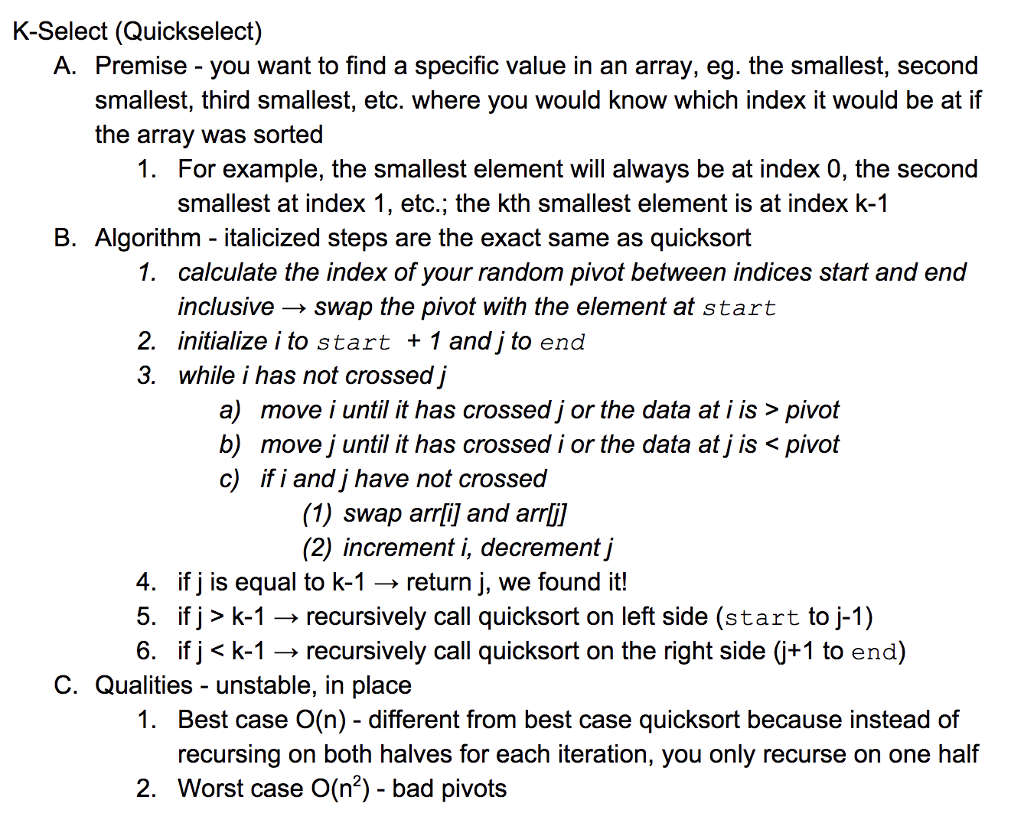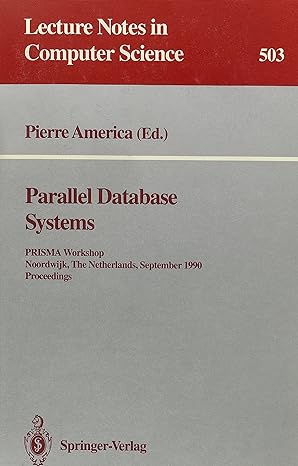Answered step by step
Verified Expert Solution
Question
1 Approved Answer
/** * Implement kth select. * * Use the provided random object to select your pivots. * For example if you need a pivot between
/** * Implement kth select. * * Use the provided random object to select your pivots. * For example if you need a pivot between a (inclusive) * and b (exclusive) where b > a, use the following code: * * int pivotIndex = r.nextInt(b - a) + a; * * It should be: * in-place * * Have a worst case running time of: * O(n^2) * * And a best case running time of: * O(n) * * You may assume that the array doesn't contain any null elements. * * Make sure you code the algorithm as you have been taught it in class. * There are several versions of this algorithm and you may not get full * credit if you do not implement the one we have taught you! * * @throws IllegalArgumentException if the array or comparator or rand is * null or k is not in the range of 1 to arr.length * @paramdata type to sort * @param k the index to retrieve data from + 1 (due to 0-indexing) if * the array was sorted; the 'k' in "kth select"; e.g. if k == * 1, return the smallest element in the array * @param arr the array that should be modified after the method * is finished executing as needed * @param comparator the Comparator used to compare the data in arr * @param rand the Random object used to select pivots * @return the kth smallest element */ public static T kthSelect(int k, T[] arr, Comparator comparator, Random rand) { }

Step by Step Solution
There are 3 Steps involved in it
Step: 1

Get Instant Access to Expert-Tailored Solutions
See step-by-step solutions with expert insights and AI powered tools for academic success
Step: 2

Step: 3

Ace Your Homework with AI
Get the answers you need in no time with our AI-driven, step-by-step assistance
Get Started


